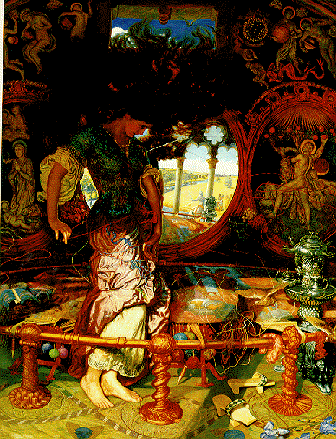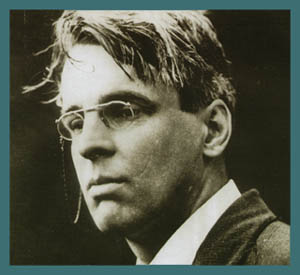Background and Deeper Meaning:Ring Out, Wild Bells is a poem written by Alfred, Lord Tennyson under The Memoriam, A. H. H. The Memoriam consists of poems written in the loving memory of Arthur Hallam, Tennyson’s closest friend, whom he had met during his time in Cambridge and whose death had a profound impact on Tennyson. The poem mostly focuses on getting over and banishing painful memories of the past, and embracing the new, awaiting future.
Captured within the lines of the poem, we can see Tennyson’s attempts to get over the grief of losing his dear friend, Hallam. Hallam has been chremamorphised, or objectified as the old year, which the poet is struggling to let go. In fact, in the third stanza, there has been an almost direct reference to Tennyson telling the mind to let go of grief as the loved one who is lost, rests in peace. This poem also corroborates that Tennyson is a theist. His belief in God and his Faith is underlined by repetition of ringing bells, like in churches and also by the quatrain structure of the poem, which resembles hymns. The last line of the poem also gives evidence to this fact as he states that ultimate salvation lies in Christ. Tennyson’s belief that every man is redeemable is also reflected by this poem as every time he mentions ringing out despair and evil, it is accompanied by ringing in of joy and faith. He believes that man, at heart is truly good and sometimes he digresses from the path of goodness due to worldly distractions. Tennyson’s optimism and zeal for renewal is projected via this poem.
Poetic Devices and Rhyming Scheme:Containing eight stanzas, each consisting of four lines, Ring Out, Wild Bells is the part of an elegy written for Arthur Hallam, In Memorium A. H. H. Each stanza of the poem is a quatrain as it consists of four lines. The poem follows an Enclosed rhyme, i.e. each stanza following the ABBA rhyme scheme. This gives the poem a recital quality. The presence of personification can be noted in the first stanza of the poem, where the old or passing year has been personified as ‘him’. On deep analysis, this can also be called the opposite, or chremamorphism, as the poem is actually written in memory of Hallam, who has been objectified as the passing year. The repetition of ‘Ring Out, Ring In’, gives the poem a touch of rhythm.
Symbolism and Imager:The poet makes an extensive use of imagery to lay out the scenario of the poetry. The phrases “flying cloud” and “frosty night”, in the first stanza itself, project an image of a wintry night. This, followed by the mention of “the year (is) dying in the night”, sets the mood of the poem and the reader is made aware of Tennyson talking about the New Year’s Eve. The repeated usage of ringing bells is symbolic of the poet’s attachment to his Faith. Ringing Bells conjure up an impression of churches. The mention of Christ in the last stanza is an attestation to this. In addition to this, bells are rung to both welcome, and bid farewell. This technique of Diacope, i.e., the repetition of words broken by some other words, gives a melodious tone to the poem. The dichotomy used by Tennyson cleverly transports the reader from an atmosphere of negativity to one of positivity, and exhibits the poet’s optimism.
Theme:Based on the major theme of rejuvenation, Ring Out, Wild Bells encompasses a range of sub-themes. The first two stanzas majorly deal with letting go of the past, and embracing the new tomorrow. The poet does this by talking about bidding goodbye to the past year and letting go of past sorrows with it. The New Year must be welcomed with the acceptance of the fact that the past rests in peace. The consequent stanzas are an appeal for social change and atonement of mankind. The motifs of fostering brotherhood and living in harmony with fellow humans are evident. The final stanza has a mention of the subject of Faith as Tennyson states his belief that salvation is achievable and every human is redeemable. Optimism is a recurring theme in throughout the poem, and this is underlined by the contrasts drawn by the ringing out and ringing in of bells.
Keywords – Ring Out Wild Bells explanation line by line (1.5), Ring Out Wild Bells Quastion and Answers (3.4)
Some online learning platforms provide certifications, while others are designed to simply grow your skills in your personal and professional life. Including Masterclass and Coursera, here are our recommendations for the best online learning platforms you can sign up for today.
The 7 Best Online Learning Platforms of 2022
- Best Overall: Coursera
- Best for Niche Topics: Udemy
- Best for Creative Fields: Skillshare
- Best for Celebrity Lessons: MasterClass
- Best for STEM: EdX
- Best for Career Building: Udacity
- Best for Data Learning: Pluralsight
















Thanks a lot 🙂
Dude this analysis is amazing could you plz help me out with some other poems too!! I’ve my exams coming up and I would really appreciate your help thanks yo
what is the of the poem ‘Ring out wild bells’?
what is the occasion of the poem ‘Ring out wild bells’
please tell rhyming word of mind.
Not helped that much I thought
I am disappointed with the result
Mam analysis is fine and also I want phonetic description, and phonetical analysis for this poem. Please share ur knowledge with us. Please.